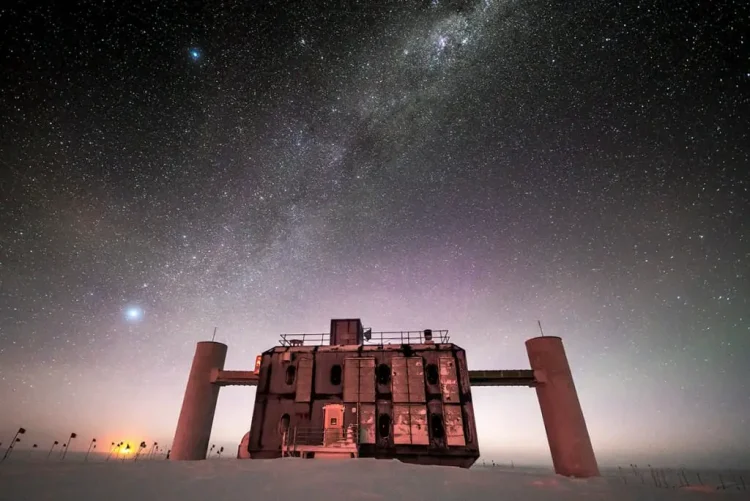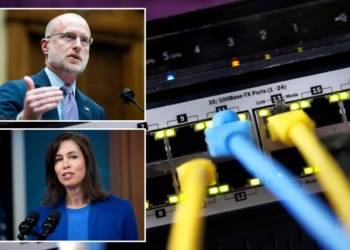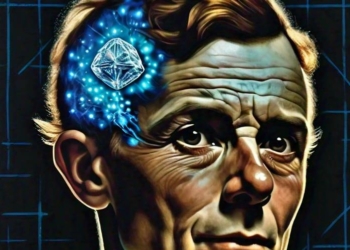One of the most abundant particles in the universe is the neutrino. While similar to an electron, the nearly massless and electrically neutral neutrinos have fundamental properties that make them difficult to detect.
The IceCube Lab sits atop a 1-billion-ton network of sensing equipment and ice at the South Pole. Image credit: Martin Wolf/IceCube/NSF
Yet, to gather enough information to probe the most violent astrophysical sources, scientists must estimate the direction of neutrino events. If algorithms could be made considerably faster and more accurate, it would allow for more neutrino events to be analyzed, possibly even in real-time and dramatically increase the chance of identifying cosmic neutrino sources.
Rapid detection could enable networks of telescopes worldwide to search for more transient phenomena.
Researchers have developed multiple approaches to reconstruct neutrino events over the past ten years. However, problems arise as existing solutions are far from perfect. They’re either fast but inaccurate or more accurate at the price of huge computational costs.
The goal of this competition is to predict a neutrino particle’s direction. You will develop a model based on data from the “IceCube” detector, which observes the cosmos from deep within the South Pole ice.
Your work could help scientists better understand exploding stars, gamma-ray bursts, and cataclysmic phenomena involving black holes, neutron stars and the fundamental properties of the neutrino itself.
Submissions to this Challenge must be received by 11:59 PM UTC, April 20, 2023.
Source: Kaggle















